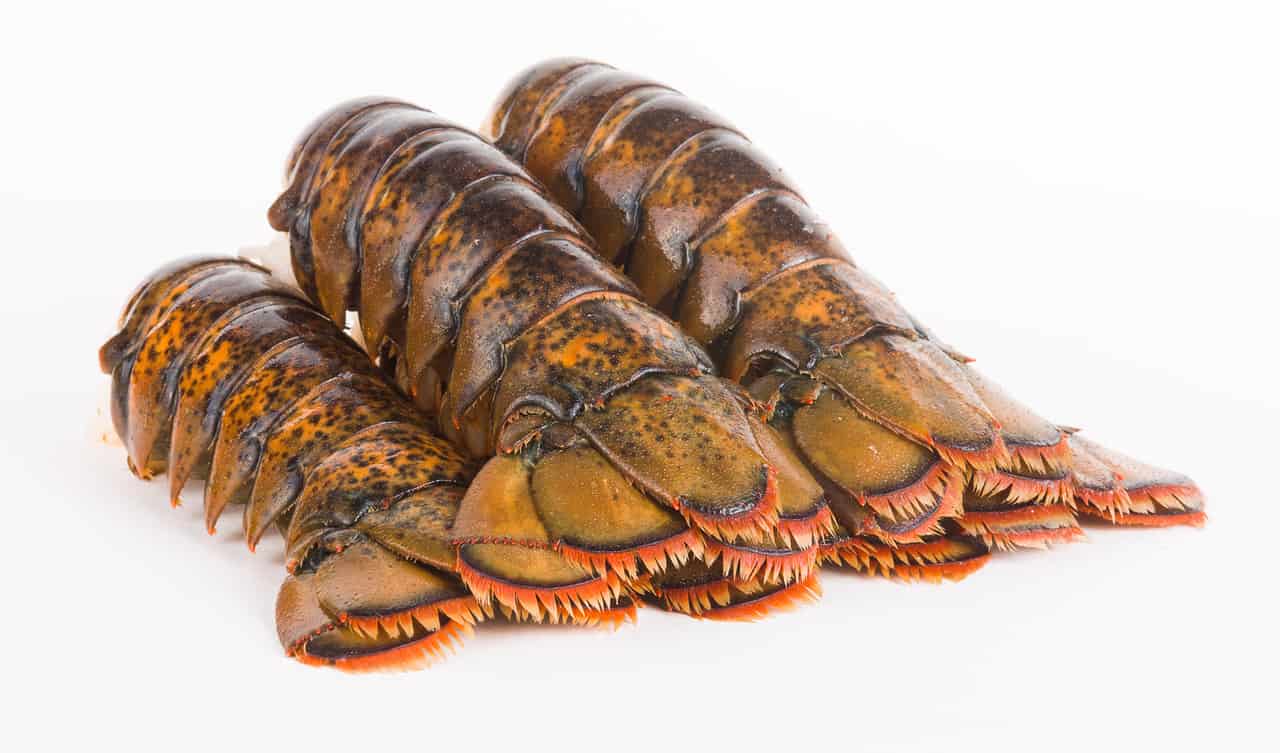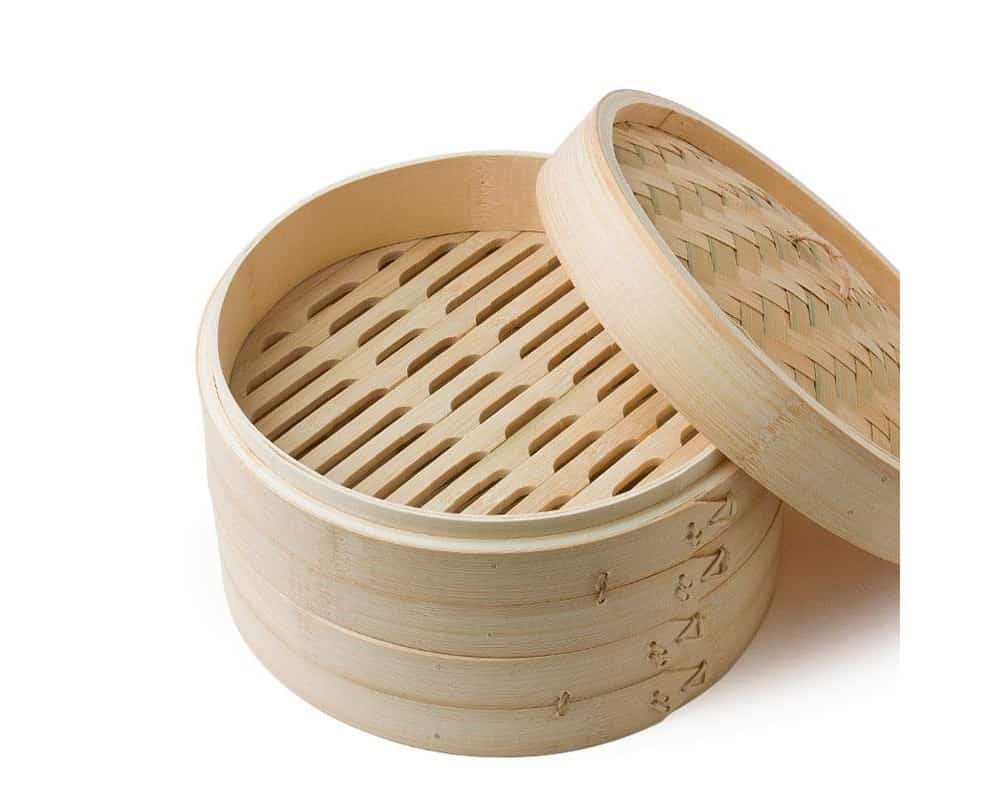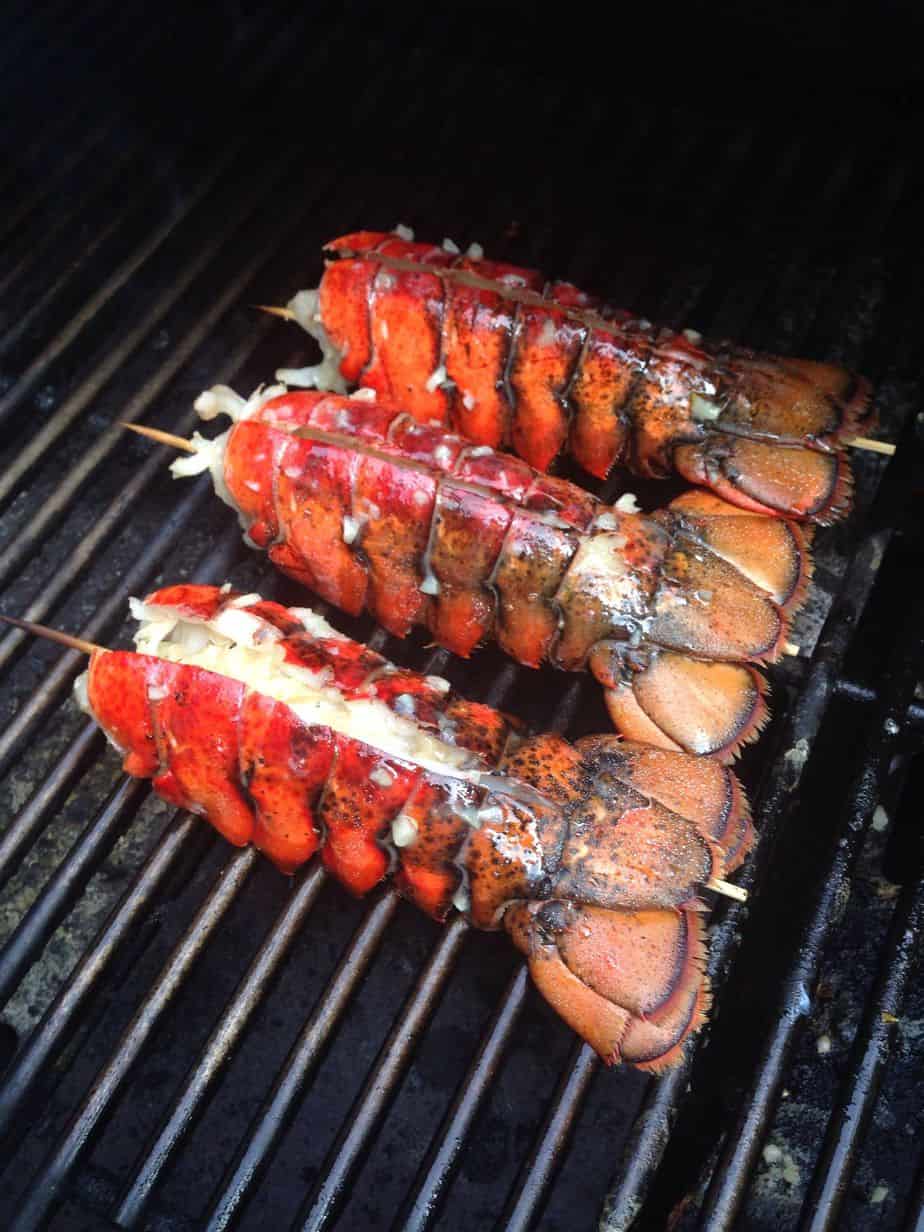3 Ways How to Cook Lobster Tail Perfectly Every Time!
Lobster tail, is easily the defacto standard for any white-tablecloth steakhouse staple menu item. Many AWG Private Chefs clients order this delicacy on the regular because it's something "fancy and hard to make at home". The truth of the matter is, cooking lobster tails at home is quick and very easy, and oh so tasty!
- Best Ways How to Cook Lobster Tail at Home Perfectly Every Time
- Different Types of Lobster:
- Tips on How To Shop For Lobster:
- How To Properly & Safely Thaw Frozen Lobster Tail
- How long do I cook lobster tail for?
- Lobster Tail Cooking Methods:
- Oven Roasted Baked Lobster Tail
- BBQ Grilled Lobster Tail
- Key Points When Cooking Lobster Tail At Home:
Best Ways How to Cook Lobster Tail at Home Perfectly Every Time
Preparing and cooking lobster tails should never have to be a daunting task. The main mistake that most home cooks often make while making lobster at home, is that they tend to overcook the poor lobster tail to death. This results in tough, rubbery, and unappealing meat texture and flavor.
There are three primary preferred methods of cooking lobster tails that if followed precisely, will result in a perfect, tender, and tasty experience, every single time!
Different Types of Lobster:
There are two main primarily utilized types of this favorite menu item sold here in the United States. Cold water, and warm water variety.
Cold water lobster is the most predominant lobster served in most U.S. restaurants. Cold water lobster meat traditionally has a denser texture, a sweet clean flavor, and cooks up beautifully. American Cold water lobster for the most part originates from the state of Maine, on the eastern seaboard of the United States.
Both types of lobster still cook up "red". American warm water lobster originates primarily from the state of Florida, The Caribbean, and Latin America. It tends to have much more of a delicate protein structure and often cooks up with a texture a bit more on the grainier side.
As private chefs, we often find that most of our clients that enjoy the warm water species reside outside of the United States, as they tend to eat more of the warm water species abroad, primarily due to availability and abundance in the supply chains.

Tips on How To Shop For Lobster:
Whenever you're at the local fishmonger or the seafood counter at your favorite mega grocery store, always ask to visually inspect your lobster tails before you buy them! There are some important key points you will want to check for before spending your hard-earned money on these little beauties that you may not be able to see from behind the plexiglass:
- Avoid lobsters with meat that is discolored (yellowish, green, dark brown, black etc) uncooked lobster meat should always be milky white and opaque.
- Avoid lobsters that have been advertised as "enhanced, extra moist, or water added" as this is nothing more than draining your wallet by the producer adding a solution of salt water to the product to increase its weight. Remember you pay for lobster by the pound!
- Avoid lobsters that have highly discolored spots on them. While natural spots occur, like the photo above, grossly discolored spots could perhaps indicate that the lobster has been injured and/or may have some other strange anomaly that possibly could have degraded the meat quality.
How To Properly & Safely Thaw Frozen Lobster Tail
When you purchase your lobster, chances are it will be pre-frozen, unless you're purchasing straight off the fishing dock or out of a live lobster tank. The two safest methods in which to properly thaw frozen lobster are:
Thawing Lobster in Cold Water
This is the quickest way how to thaw lobster on the same day. Take your lobster tails out of their packaging, and give them a quick rinse under the tap with cold running water. Then place the lobster in a freezer grade zip top bag, add a couple of butter knives to the bag with the lobster, and slowly lower the lobster tails into a large pot of water leaving just about 3/4 of an inch of the zipper open. This is known as the displacement method and will remove the maximum amount of air out of the bag to give the lobster the most contact with the water, without it getting soggy.
Once you've displaced as much air out of the bag as possible, seal it. The butter knives will act as weights to hold the entire bag underwater. Let your tap run in a slow and steady stream for 1-2 hours. Your lobsters should be thawed beautifully.
Important. NEVER THAW ANYTHING WITH HOT WATER! Not only can this begin to cook the lobster ineffectively, but it can also breed harmful bacteria and can make you very sick.
Thawing Lobster in the Fridge
Thawing lobster in the refrigerator is the best method when you have 24 hours ahead of time before you wish to cook them. Simply use a small rimmed sheet pan (baking sheet with a lip on it), and place a pad of 4-5 paper towels under the original packaging that the lobsters came in. Place the lobsters on a shelf in the middle of your fridge, and let the fridge do the work for you, slowly and safely thawing the meat. The paper towels will absorb any meltwater liquid that comes out of the lobsters during the thawing process and will speed cleanup for you.
How long do I cook lobster tail for?
Average lobster cooking times will vary depending on the size of lobster tails you have.
- For a 4 ounce lobster tail, cooking time will range from 4-8 minutes.
- For a 6 ounce lobster tail, cooking time will range from 6-9 minutes
- For a 8 ounce lobster tail, cooking time will range from 8-11 minutes
- For a larger than 8 ounce tail, consider yourself blessed! Cooking time will range from 11-15 minutes
Why don't we quote exact cooking times?
The type or species of lobster you have, the type of oven you have, how accurate your oven's thermostat is, etc. Please use a trusted instant-read thermometer to test the internal temperature of your lobster. You don't want to turn the hard-earned money that you just spent buying the delicious crustaceans and turn them into a rubber tire.
Lobster Tail Cooking Methods:
Steaming Lobster Tails:

Steaming lobster tails is my most preferred method of cooking lobster. Steaming provides a more gentle heat and cooking method, which will result in much more tender lobster tail meat, while still cooking the tail all the way to the proper doneness. Add approximately 3-4 inches of water into your pot, and place over high heat, with a pair of good quality kitchen shears, make a cut in the top of the lobster tail from the head end to tail end, making sure to cut only the shell and not the tender meat below.
This will aid in steam penetration, and allow for faster cooking without the risk of the lobster meat getting tough on you. Add the lobster tails to the bamboo steamer, close the lid, and steam with the time limits listed above, or until the meat is opaque and white in color, and using an instant read thermometer internal temperature registers approximately 140 degrees F. DO NOT OVERCOOK IT!
Oven Roasted Baked Lobster Tail
Place the lobsters on a rimmed baking sheet tray lined with heavy duty aluminum foil (for easy clean-up) and again, cut the top of the shell as indicated above paying special attention so as to not cut the flesh of the lobster while creating the cut. Spread open the shell approximately 1/2 to 3/4 of an inch or so to expose the flesh below. Brush the lobster tails with melted drawn butter (also known as clarified butter, or ghee), add some minced garlic & herbs if you wish, and roast in a 450-degree oven utilizing the suggested cooking times above. Again you are looking for a target lobster internal temperature of 140 degrees F.
I'm sure you're asking yourself hey Chef, "but what about how to broil lobster tail". My answer is a simple resounding NO.
Broiling is an ultra-high heat cooking method that can quickly take your lobster tail meat from tender and delicious, to dried out rubbery pencil eraser texture in just a minute or two. Average household oven broilers will run at a temperature anywhere from 500-600 degrees F, but some high output broilers can reach 800+ degrees F. These cooking temperatures for lobster are far too high.
BBQ Grilled Lobster Tail

There is certainly something to be said about the flavor that a BBQ grill imparts into food. With that being said, it's also a quick way to overcook these tender crustaceans. So now is not the time to walk away from the grill going in search of another tall frosty cool adult beverage. To grill lobster tail, simply cut a slice in the shell as previously indicated, using your kitchen shears.
Run a bamboo skewer thru the center of the lobster tail, this will prevent it from curling during grilling, if you don't have a skewer, you can always use the handle of a stainless steel teaspoon. When you grill your lobster tails, always use the thermometer temperature test method, again looking for no more than 140 degrees F. I prefer to grill lobster tails over indirect heat to drastically help reduce the risk of overcooking or drying them out.
Key Points When Cooking Lobster Tail At Home:
- Always inspect your lobster for discoloration, & unusual spots
- Never cook lobster to more than 140 degrees F internal temperature using a trusted digital instant-read thermometer
- When grilling lobster, use a bamboo skewer to prevent the tail from curling
- Slice the shell without cutting the meat to allow for more even cooking and a beautiful presentation.
- You can never have enough melted unsalted butter and lemon with lobster tails!
Questions? Comments? Drop us a message below, we're here to help!
Check Out More Delicious Recipes and Entertaining Tips & Tricks from AWG Private Chefs:
- Top Kitchen Gadgets You Must Have In Your Kitchen NOW!
- Why You Should Hire a Private Chef For Your Next Event
- Best Kitchen Knives You Will Ever Own
About the Author: Certified Master Chef Sean Andrade is Executive Chef/Owner of AWG Private Chefs, voted the #1 Private Chef Company in California, Best Personal Chefs and Best Caterers in San Francisco for multiple years by Expertise. Chef Sean has worked in the restaurant and hospitality industries worldwide for more than 25 years. His company AWG Private Chefs offers highly custom-tailored, bespoke private chef dining experiences, select location meal delivery, and event catering in over 30 countries around the globe.
Appreciating the time and energy you put into your website and in depth
information you present. It's great to come across a blog
every once in a while that isn't the same outdated
rehashed information. Wonderful read! I've bookmarked your site and I'm including your RSS feeds to my Google account.
This actually answered my drawback, thanks!
Hola! I've been following your site for a long time now and finally got the courage to go ahead and give you a shout out from Austin Tx! Just wanted to say keep up the excellent work!
closed.
If grilling should the grills lid remain open or closed?
Great directions and info commentary; best lobster tail at home we ever had.
Our 60th wedding anniversary at the end of December could maybe use a private chef. Could you
please send us your advice about a chef for that occasion. Thank you!
Thanks for the info will try again and thanks again
Hi Diana,
Any steamer should produce good results.
Do you have to use a bamboo steamer? Will it turn out just as good using a Flavor Scenter Steamer Deluxe?
Used the steaming method and turned out perfectly. In the past I always overcooked it and was afraid to try again because of expense. Got brave and followed your directions and even though I thought it looked raw took it off. Thank you, yummy! Going to try BBQ next.
Excellent advice re preparing and cooking Lobster tail.
Will check with you again in the near future. Thanks Chef